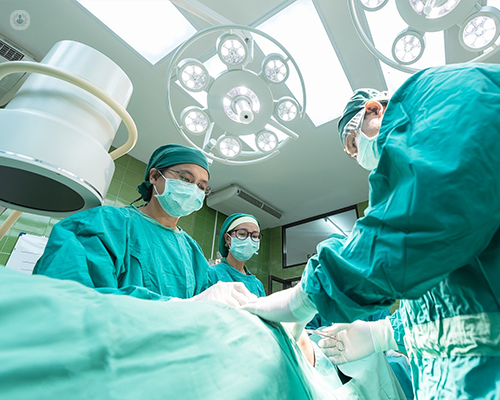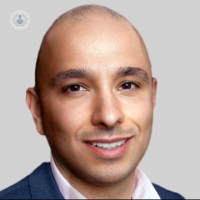Types of sport injury surgery and alternative treatments
Autore:The nature of many sports means that it’s impossible to play without some risk of injury. Fortunately, orthopaedic specialists such as Mr Neil Jain can provide surgical and non-surgical treatments for those of us who experience a sports injury.
He explains the types of surgery for sport-related injuries and the non-surgical alternatives to help you better understand your options.

What is sports surgery?
Sports surgery refers to surgery that is required to treat injuries sustained during sport or injuries that would limit someone’s participation in sport. This may involve classic orthopaedic injuries such as a fracture (broken bone) but more likely would involve so-called ‘soft tissue’ orthopaedics, which covers ligament injuries, tendon injuries and muscle injury.
When is sports surgery needed?
While there are some absolute indications for sports surgery, non-operative treatment is suitable for many sports injuries. However, when there has been a complete tear of a tendon away from a bone (avulsion), surgery is often indicated. An example of this is a traumatic rotator cuff tear in the shoulder.
Surgery should also be considered if non-operative treatment has been attempted and not resulted in a satisfactory outcome.
What are the main sports surgeries?
These depend on which joint is affected.
In the shoulder, common surgeries include:
- Arthroscopic stabilisation (for shoulder dislocation )
- Arthroscopic rotator cuff repair (for rotator cuff tendon tear)
- Acromioclavicular joint stabilisation/coracoclavicular ligament reconstruction (for a separated shoulder)
- Clavicle fracture fixation (for a broken collar bone)
Within the knee, common surgeries include:
- Anterior cruciate ligament (ACL) reconstruction (for an ACL tear)
- Meniscal repair (for meniscus tear)
- Quadriceps or patella tendon repair (for tears)
Also, other common sites of avulsion injuries (complete tear of a tendon away from a bone) include:
- Distal biceps rupture
- Triceps rupture
- Pectoralis major rupture
- Hamstrings rupture
All of which require prompt diagnosis and treatment.
What are some alternatives to sports surgery?
There are many non-operative treatments available. This can include biomechanical analysis, physiotherapy, braces and supports or even injections. A combination of these therapies can often be used and as previously mentioned, can help avoid the need for surgery in many cases.
How can sports injuries be prevented?
By the nature of many sports, injuries can never be fully prevented without avoiding full exposure to the sport (i.e. not to play the sport). However, by definition that is not realistic. Therefore, many risk reduction strategies exist in order to try and decrease the risk of injury when taking part in sport.
These can vary from protective equipment and rule changes in terms of sports governance to ensuring adequate pre-activation of muscles prior to sports participation (i.e. warming up appropriately). We have demonstrated a reduction in sports injuries using appropriate techniques in both Premier League and International Football. A popular guide within football is the FIFA 11+ which has been shown to decrease the risk of lower limb injury in footballers.
When might it be a good idea to have joint preservation surgery?
I would suggest following a suitable consultation if you have been advised to have a joint replacement and wanted to seek a second opinion about alternatives.
It should be stressed though that joint preservation surgery isn’t the only option. Many other non-operative techniques actually work better than surgery regarding joint preservation. Therefore, I would recommend that anybody wishing to explore joint preservation option would ideally do so prior to any symptoms; however, that is not always likely given that an asymptomatic individual would have no reason to query why they may need to adopt joint preservation techniques.
Realistically, we tend to discuss joint preservation with individuals that have started to experience some pain and a restriction in their activity. The earlier they seek help, the more likely joint preservation is possible.
What joint preservation surgeries do you carry out?
The majority of my joint preservation work is through non-operative techniques. This includes biomechanical analysis, the introduction of simple supports like insoles or support clothing through to the use of supportive or biomechanical altering bracing. I also offer a consultation service regarding injections and Orthobiologics.
Do you have concerns about your joints and sports? Click here to learn how Mr Neil can help you.


